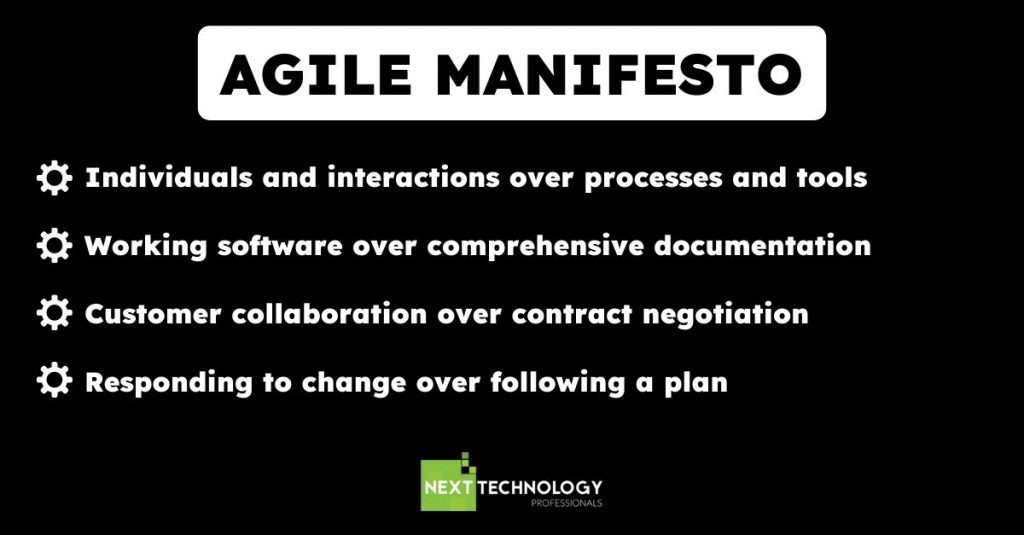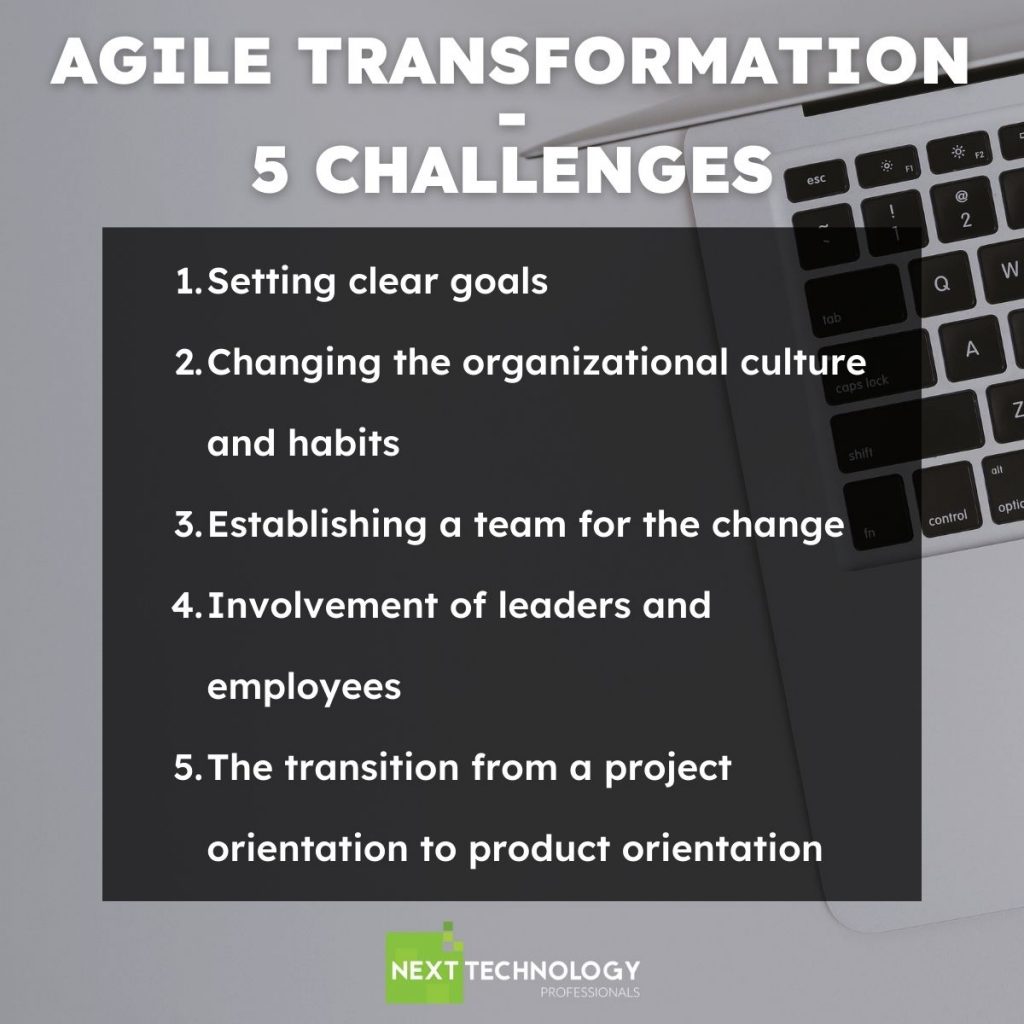Business owners, tempted by the promised benefits of agility in their organization, increasingly decide to reorganize the way they work. Unfortunately, in some organizations the process of agile transformation takes many years, and yet it does not bring satisfactory results. People involved in the process often wonder why this is so, sometimes blaming Agile for the failure. Unfortunately, sometimes entrepreneurs give up too quickly and resign from introducing agility into the organization, instead of taking the time to reflect and consider what has actually gone wrong and how they can improve it. It should be noted that Agile transformation never ends. Introducing Agile to an organization is a continuous process of improvement through analysis and adaptation.
Agile transformation brings many challenges. In this article, you will learn what mistakes we make most often and how we can deal with them.
What is Agile?
In short, Agile is a way of thinking that allows us to react quickly and effectively to changes, ensuring better efficiency with less work. Agile philosophy is based on the belief that employees have all the competencies and skills needed to complete projects. Thanks to this, the teams are able to decide independently how they will do their work.

The Agile Manifesto provides a very brief explanation of what Agile design should be. Its main features are:
- individuals and interactions over processes and tools,
- working software over comprehensive documentation,
- customer collaboration over contract negotiation,
- responding to change over following a plan.
Data from the 15th Annual State Of Agile report shows that some of the most common reasons for starting Agile work include:
- Increasing the ability to manage changing priorities – 64%,
- Increasing the productivity of the team – 47%,
- Improvement of software quality – 42%.
In the same report, we will also find out which areas in companies are most often Agile-driven:
- 86% – Software development,
- 63% – IT,
- 29% – Operations,
- 17% – Marketing,
- 17% – Security,
- 16% – Human Resources.

Challenge 1. Setting clear goals
One of the key steps in any process is to identify the reasons why we want to change the organization and what we want to achieve with it. However, some organizations have a problem with answering these questions. It happens that we introduce Agile due to the desire to deliver solutions to the market faster or to chase competition and copy the activities of other companies that have decided on an agile transformation. However, it is a thorough analysis of the situation and needs of our company that is the key to success.
Challenge 2. Changing the organizational culture and habits
Organizational culture reflects the mission and values of the company. A rigid, extensive structure based on a hierarchy rarely promotes employee motivation and may negatively affect their trust in the employer, sense of responsibility and self-fulfillment. It also makes it difficult to introduce Agile leadership.
At the same time, big changes often meet resistance. Introducing Agile in the company may cause resistance from the managerial staff, whose role will transform as the organizational structure flattens. There may be concerns about losing their current position or a feeling that their work is no longer needed in the company. It is worth taking care of these concerns and presenting a clear plan of action to managers and reassuring them that they are still important, and only their role in the organization, which is intended to bring about positive results, is changing.
Challenge 3. Establishing a team for the change
Due to the high level of complexity of the process and the time needed to implement the transformation, the management board is often not able to carry it out on its own. Therefore, it is necessary to appoint a project team and appropriate selection of its members. If we take into account the fact that “lack of skills and experience” is one of the main fears of becoming Agile, the best way to implement it is a combination of experts from various areas representing internal departments of the company and external consultants with experience. In order to be as efficient as possible, the team should be empowered to make decisions as part of its expertise.
Challenge 4. Involvement of leaders and employees
There are two possible ways to implement a transformation. One is the top-down approach. It consists of a change coming from the management and directing it to individual executive teams. The second approach, the bottom-up, comes from the initiative of teams that would like to introduce changes in the way they work.
A more effective way is top-down transformation. Each change must be accepted by the management board, and the actions initiated by it, often have a better chance of being effectively implemented. When we want to redesign the company and the way it functions, it is necessary to have a good understanding of these changes by the people who manage the organization. That is why the involvement of leaders is so crucial in an Agile transformation. Without their approval, we will not ensure the durability of the changes introduced.
At the same time, we must remember that Agile transformation should be carried out at all levels of the organization. Employee involvement in changes and convincing staff of their rightness is another key element of the transformation. If the company’s employees are not convinced of the change or if they resist it strongly, our efforts may be wasted. This approach may result from misinformation, a misunderstanding of the need for empiricism, or a strong fear of changes in the workplace. That is why well-conducted communication and educating recipients about the value of agility in the organization are so important.
Challenge 5. The transition from a project orientation to product orientation
The traditional design approach is dominant in many large organizations. At the same time, they do not clearly define the product and define its value for customers. This usually leads to the so-called iterative cascade in which both the budget, scope of work and the time of implementation of individual stages of the project are predetermined, rigid and unchangeable. Sometimes this leaves no room for adequate inspection and adaptation to deliver the value that customers expect.

It is worth using the experience
To sum up, when designing an Agile transformation in an organization, it is worth using the experience of people for whom agility is not new. They are able to implement known practices, referring them to the needs and situation of the company, and explain their assumptions to the people working in it. Thanks to this, they will not only affect the efficiency and speed of changes introduced in the organization, but also increase the chance for a better understanding of the goals and benefits of Agile transformation.
If you are looking for IT specialists to join your Agile team, let’s get in touch.




